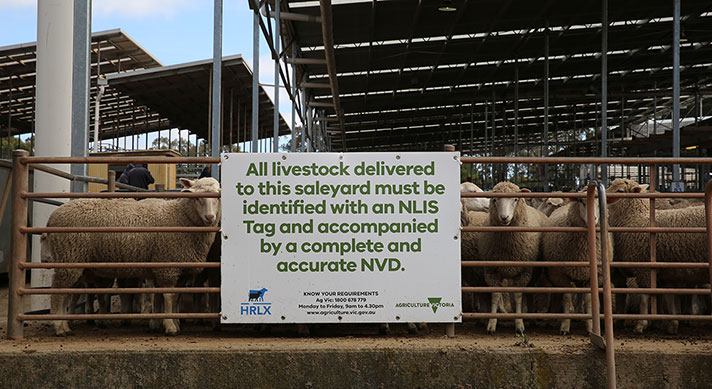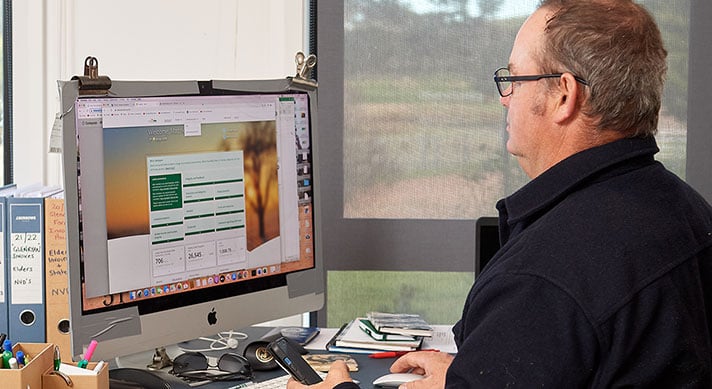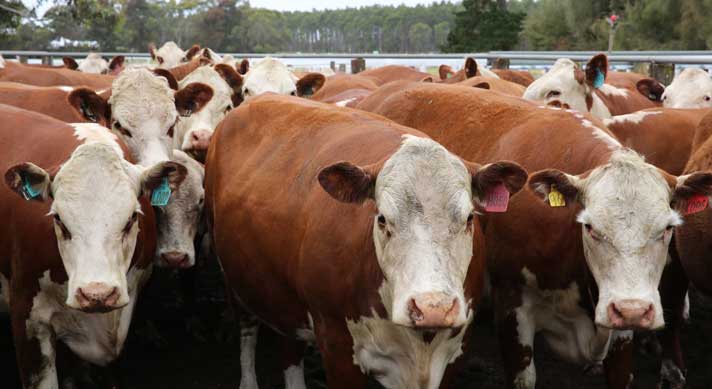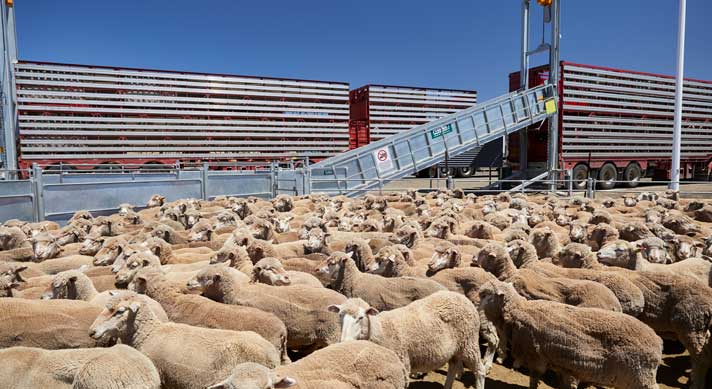
The National Livestock Identification System (NLIS) is the gold standard for lifetime traceability within the red meat industry. It ensures buyers, saleyards and processors understand the steps your livestock have taken and assures consumers of the quality and safety of your product.
Market access and biosecurity standards heavily rely on our traceability systems. Without these systems, our industry would face reductions in global sales, lower expectations of quality, and ultimately lost profits for our hard-working producers.
NLIS: The gold standard
The NLIS is Australia's national system for the identification and traceability of cattle, sheep and goats. It reflects Australia's commitment to biosecurity and food safety and allows Australian red meat to compete globally.
Three key elements enable lifetime livestock traceability:
- A Property Identification Code (PIC) that identifies all physical locations.
- All livestock are identified by an NLIS approved visual or electronic eartag/device.
- Livestock location data and movements are recorded in a central database.
Without all three of these elements working in tandem, Australia’s traceability systems would be unreliable. Producers must ensure their tags, PICs and records within the NLIS database are up-to-date and accurate, in order to properly maintain lifetime traceability for their stock.
Three key producer responsibilities
- Obtaining a Property Identification Code
A Property Identification Code (PIC) is an eight-character code that identifies a livestock-producing property. PICs are issued by each State or Territory government and are a legal requirement to have or move livestock on and off a property – it forms the basis of Australia’s food safety and traceability programs. PICs are used to control and issue NLIS tags, National Vendor Declarations (NVDs) and identify the physical location of livestock in the NLIS database.
State and territory government departments issue PICs to identify parcels of land used for agricultural and biosecurity purposes. Please contact your relevant authority to obtain a PIC.
- Applying NLIS tags/devices
Cattle, sheep and goats must be identified with an NLIS-accredited tag/device before leaving a property. ISC accredits these devices and works closely with suppliers to ensure they are fit for purpose. General rules for using NLIS devices include:
- All animals leaving a property (PIC) must be identified with an NLIS-accredited device before moving unless there is a specific exemption, or a permit is obtained from the state or territory authority.
- Cattle must be identified with an electronic Radio Frequency Identification Device (RFID) – either a single ear tag or a rumen bolus/visual ear tag combination.
- Sheep and goats can either use an electronic RFID device or a visual (non-electronic) tag, except in Victoria where electronic devices are mandatory.
- It is very important to use the correct applicator and follow all instructions when applying NLIS devices to livestock.
- NLIS-accredited devices cannot be removed until the animal is processed or deceased – removing an NLIS tag is an offence under legislation.
- If you are moving an animal off its property of birth, the animal must be identified with an NLIS-accredited breeder device.
- If an NLIS-accredited device is lost or non-functioning and the animal is no longer on its property of birth, the animal must be re-tagged with an NLIS accredited post-breeder device.
- NLIS accredited devices are issued to a producer using their PIC which must be validated at the time of ordering. Producers should check with their state or territory for any additional requirements relating to ordering devices.
NLIS devices are the core of animal identification and traceability. For more information, visit: Animal Identification
Please note that at the time of publishing (Feb. 7, 2023), federal and state governments are discussing changes to the identification of sheep and goats.
Integrity Systems Company will keep value chain members informed on any updates to traceability requirements.
For more information visit the Department of Agriculture, Fisheries and Forestry website.
- Completing NLIS livestock transfers
Recording a livestock transfer in the NLIS database will vary depending on a few factors, however, the key points include:
- Livestock movements with electronic tags:
- Livestock are scanned using a reader or scanner.
- In the NLIS Database, select the Livestock moved onto/off my property
- The file from the scanning device containing all the device details can then be uploaded which records the transfer from one PIC to another.
- Livestock movements with visual tags:
- These are recorded as a mob-based movement.
- In the NLIS Database select the mob-based movement onto/off my property
- Upload the file or input the details and this records the transfer of a mob from one PIC to another.
- A waybill or NVD can also be uploaded with the NLIS transfer as evidence of the movement.
- The buyer or receiver of livestock is responsible for recording the livestock movement in the NLIS Database.
- If the seller/vendor or an agent completes the transfer on the buyer/receiver’s behalf, ensure you – as the buyer – obtain the Upload ID as a receipt to show completion. This number can be written onto the NVD or incoming livestock records.
- To check that livestock transfers have been accurately recorded, you can view all transfer reports through the NLIS database.
- If livestock are bought, sold, or moved through a saleyard, the livestock movement must be recorded by the saleyard.
- Livestock transfers must be completed within 48 hours of the physical livestock movement occurring.
Livestock traceability is critical to keeping our industry safe from biosecurity and food safety incidents and helps ensure a high-quality product for our consumers, providing the identification and traceability needed from paddock to plate, so we can stand by what we sell.
Related


